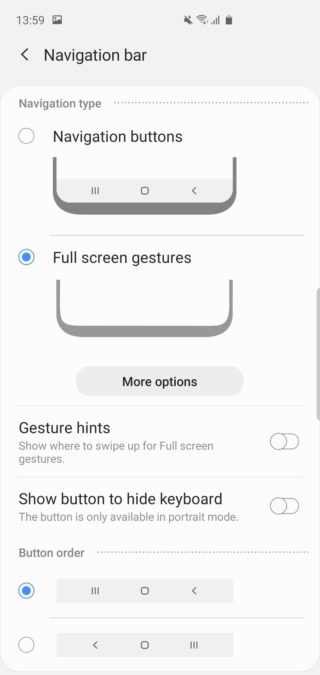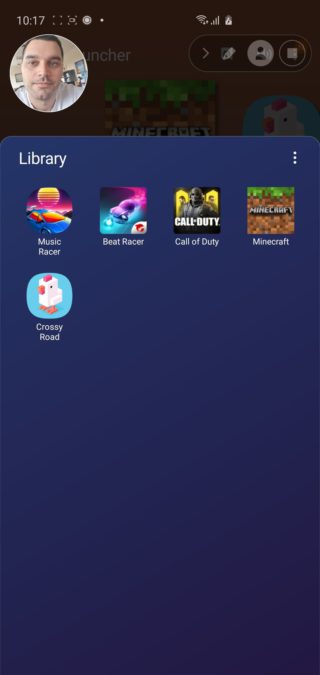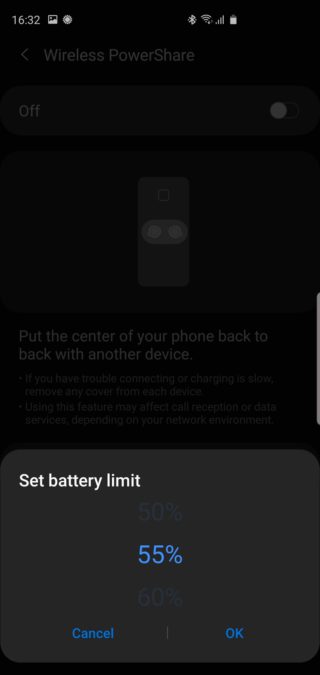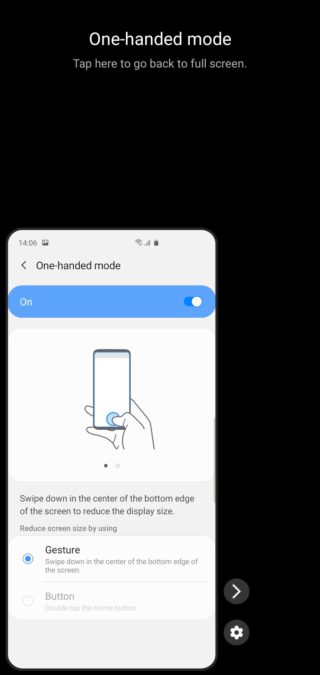On October 9th, Samsung finally shared its specific plans to update its smartphones to Android 10. The poster below confirms that One UI 2.0 / Android 10 Beta is almost here.

So far, only owners of unlocked Galaxy S10e / S10 / S10 + in the US or carrier versions of T-Mobile and Sprint are invited to beta testing. Some journalists received a version for review.
Let's see what's new in it:
- Full screen gestures;
- Improved mode of interaction with a smartphone with one hand;
- Improved biometrics;
- New battery visualization;
- Advanced Digital wellbeing function;
- Improved standard applications Samsung Internet, Contacts, Calendar, Reminders, Explorer, Calculator;
- Android Auto app is now preinstalled;
- Updated camera interface, added AR Doodles mode;
- Added a screen recording function with the option to record yourself on the front camera;
- No Android Beam.

- General impressions
- Google gestures
- New camera interface
- Built-in screen recording
- New notifications
- Redesign of controls
- Improved Layout for Device Care and Digital Wellbeing
- Setting Restrictions on Reverse Wireless Charging
- One-handed operation mode
- Lock screen and Always-On Display changes
- Digital Wellbeing
- Updated Apps
- Conclusion
General impressions
Visually Android 10 and the proprietary One UI 2.0 shell practically do not differ from Android 9 and One UI 1.1. Difference is hard to notice, that at first glance, in the second, in the third. On the other hand, Samsung's new One UI 1.1 was only released in January this year, so it would be strange if they completely redesigned the look and feel again.
In general, most of the changes are called 'under the hood'. They improve the overall functionality of the device, performance, battery life. There are also such things as new gesture navigation from Google, improved statistics on device usage, advanced Digital Wellbeing feature. But if you did not use it before and were not interested, then, perhaps, after the update, just do not pay attention.
Google gestures
The internal Samsung gesture navigation, according to Phone Arena journalists, was in a semi-finished state. Users had to reach to the very bottom of the screen to swipe. In Android 10 and One UI 2.0, the user has more options to control the interface.
By default, the smartphone uses the Google-version of the interface, which suggests using swipes from the bottom up and horizontally from the edges of the screen. The previous control option is also available for selection. Explanation: if earlier it was necessary to hook the screen from the very bottom, now it is enough just to make a long swipe from the bottom up.
Also, a new useful feature has appeared – this is the setting of gesture sensitivity. It will be useful if, for example, a protective glass is glued to the smartphone or a case is used that makes it difficult to swipe from the edge of the screen.

New camera interface
The camera interface has changed slightly. AR Doodle stickers have appeared (you can add ears, for example), and zoom marks have been added, which can be immediately selected, rather than using the slider.




Built-in screen recording
Samsung has also added built-in screen recording at 480p, 720p and 1080p. Simultaneously with the screen, you can record a selfie video on the front camera. This is a useful feature. For example, you can stream while playing on your phone and display your image at the same time.

New notifications
The new version of the OS will also have 'smart notifications' that allow you to interact with applications. A typical example of smart notifications is the quick reply function in Telegram or WhatsApp directly from the curtain without opening the application. This is available in the current version Android 9 and One UI 1.1., But now they promise that all applications are supported and more actions are available.
Redesign of controls
Updated sliders for volume control.
-

New variant
-

Old variant
Improved Layout for Device Care and Digital Wellbeing
Samsung has redesigned the Device Care tab. The tab has become more informative and visually clean.
Setting Restrictions on Reverse Wireless Charging
Now you can set the limit up to which the phone can give a charge. Previously, this option was simply disabled at 30%, but now you can set, for example, 80% or 55%. Options are available from 30% to 90%.
One-handed operation mode
Basically, the way to activate one-handed mode has changed. Now, to start, you need to make a swipe from the very bottom of the screen to the center of the area highlighted in the screenshot. Such a gesture cannot be called intuitive and simple.
Lock screen and Always-On Display changes
Unfortunately, there are no screenshots, but the author of PhoneArena says that Samsung has added a smooth transition between AoD and the lock screen. You can also make the on-screen fingerprint reader area always highlighted, or, conversely, always off, or so that it is active only when the AoD function is working.
Digital Wellbeing
There are no screenshots, but they write that now it has become easier to set limits on the use of the device's screen. Also added 'parent mode'.
Updated Apps
Many applications have been updated a bit. For example, in 'Contacts' the 'Trash' option has been added, where a deleted contact will be stored for up to 15 days. The calendar now has stickers and the ability to prioritize tasks. It also became possible to set tasks based on geolocation. For example, the task 'Buy milk' will play if you enter the previously mentioned 'Pyaterochka' regardless of time.
The 'Trash' function has also been added to 'Explorer'.
Also, the smartphone is now preinstalled with the Android Auto application. But the function Android Beam, which allows you to quickly exchange files with other Android smartphones using NFC, was removed.
No clear release dates have been announced. The changes are small, under the hood, but pleasant. The question remains why Samsung decided to abandon the Android Beam feature, which at one time was proud of Android and showed how cool the system is compared to iOS.
Based on materials from PhoneArena
Conclusion
I have mixed impressions of the update. I warmly support the revision of standard applications. Samsung has them so great that, unlike the same Huawei or Xiaomi, where I immediately switch to analogs from Google, in Galaxy Note 9 I prefer to use both a standard browser and a calendar, and used to be a mail client, until it became clear that it does not support aliases.
The Device Care layout has become really clearer. For example, in the current version, to turn off 'fast charging', you had to see the 'three dots' in the upper right corner, fall into 'Settings' and scroll to the bottom of the screen. I usually turn off fast charging, because, firstly, I'm not in a hurry, and secondly, I plan to update the main smartphone in 2-3 years.
New gesture navigation is fun. About three months ago, by the way, I gave up on-screen buttons and decided to try gestures. Now I'm used to it, and I really like it. Hopefully the new gestures will be even more comfortable.
Removing the feature Android Beam I blame and despise. This is one of the most convenient functions that I regularly use as a journalist. Usually, at press events, you can take test photos on the presented smartphone and immediately transfer them to yourself at Android Beam. I believe that Samsung will replace Android Beam with something, because simply cutting out the standard function Android is even more stupid than 'letting' ads for third-party stores in Samsung Pay. By the way, such advertising has disappeared from me, only ordinary branded banners remain.
Please tell us in the comments what changes you would like to see in One UI 2.0 and Android 10. What features are you missing?






